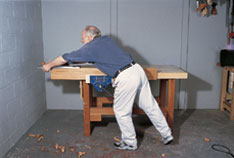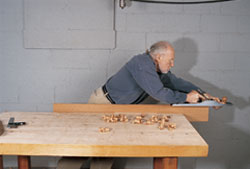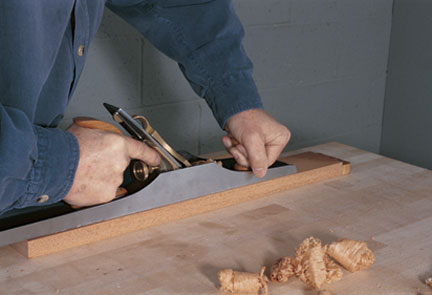
Your grip, stance and body motions combine to make planing wood a whole body experience.
More often than not it is understanding the small details that lead to success when mastering a woodworking technique. While a hand plane must be sharp and properly adjusted to work correctly, how a woodworker grips and stands while using the plane is important as well.
The Hand Grips
The right hand grips the rear handle. It applies downward pressure and transmits the push that comes from your legs and body. The right thumb comes around and virtually traps the second finger. The right index finger doesn’t wrap around the blade assembly; it tucks down into the casting of the frog. This grip creates a lot of control tension between the index and little fingers. If you wrap your index finger around the blade assembly, sooner or later you will move it.
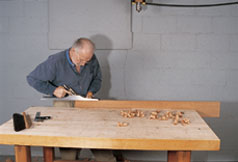
The left hand grip varies according to whether you are planing a face or an edge. On a wide board, press down on the top of the front knob with the palm of the hand and curl two fingers under it to the left and right. This grip helps you exert a lot of downward pressure, along with the pull that steers the cutting action.
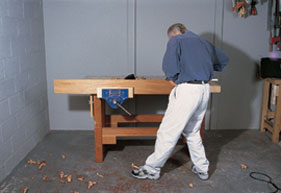
To plane an edge, hold the plane in a pincer-like grip. The thumb goes just forward of the mouth, with all four fingers wrapping under the sole. This grip helps you sense horizontal pressure while you apply downward pressure, and so it gives you more control and balance on a narrow edge.
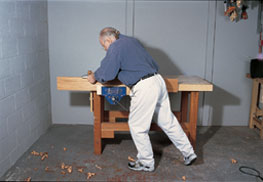
Stance and Motion
The plane gets its power from your feet, which should be placed a comfortable walking pace apart. Keep your wrist, lower arm and upper arm in one line, and direct the push from your shoulder. As the cut proceeds, shift your weight from your rear foot forward, and unwind until your body has rolled over your ankles. Your more powerful lower body thus will propel the plane about 42 inches. Continue the cut by unfolding your upper body and arms, to push onward another 18 inches, more or less. This 60 inches is about the limit you can cut without traveling or walking the plane. To plane a long board you have to travel in a smooth and unhurried way. Slide your rear foot up to the front foot, then slide your front foot forward. Don’t try to cross your feet.
